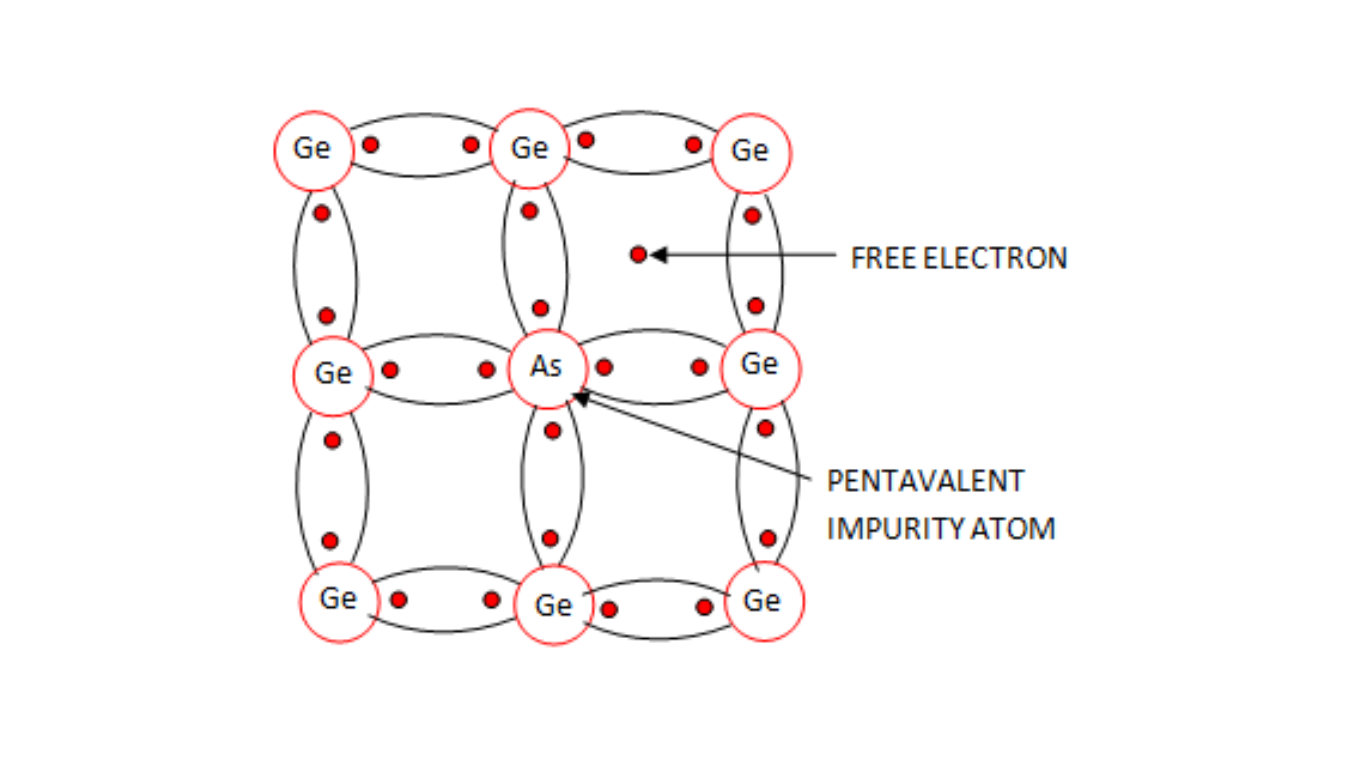N-Type Semiconductor: Understanding its Properties and Applications
When you add a small amount of pentavalent impurity to a pure semiconductor, you create an n-type semiconductor. These impurities, like arsenic or antimony, provide extra free electrons, which are donated by the pentavalent impurity atoms. That’s why we refer to them as “Donor Impurities.”

For example, when a small amount of arsenic is added to germanium, each arsenic atom provides one free electron in the crystal. Since there are many atoms of the impurity, it gives millions of free electrons for conduction.
Energy Diagram of n-Type Semiconductor
The energy level diagram of an n-type semiconductor shows that there are a large number of free electrons available in the conduction band. These electrons are not part of the covalent bonds in the crystal and are responsible for conducting electric current.
![]()
Conduction Through n-Type Semiconductor
In the n-type semiconductor, the flow of current is due to these free electrons, which move toward the positive terminals when a potential difference is applied. This type of conductivity is called “negative” or “n-type” conductivity, as the number of free electrons is greater than the number of holes.
Overall, the n-type semiconductor has many free electrons, and it conducts electricity through these mobile charge carriers.
Advantages of the n-type semiconductor
Application of the n-type semiconductor
Integrated Circuits: n-type semiconductors are used in making complex integrated circuits, enabling the functioning of modern electronic devices.
Transistors: They are vital components of NPN transistors, widely used in amplifiers, switches, and electronic control systems.
Light-Emitting Diodes (LEDs): n-type semiconductors contribute to creating LEDs, which emit light efficiently and are used in various lighting applications.
Sensors: They are used in sensors for temperature, pressure, and other environmental measurements in everyday devices and industrial applications.
Power Electronics: n-type semiconductors are employed in power management devices like voltage regulators and inverters used in electrical systems.
FAQs
1). What is an n-type semiconductor?
An n-type semiconductor is a material made by adding impurities to a semiconductor like silicon or germanium.
2). What are the majority and minority charge carriers in this semiconductor?
In this semiconductor, the majority of charge carriers are electrons, and the minority of charge carriers are holes.
3). What are extrinsic semiconductors?
Extrinsic semiconductors include p-type and n-type semiconductors.
4). What are semiconductors and their examples?
Semiconductors are materials that have properties between conductors and insulators. Examples include selenium, silicon, and germanium.
5). What is the function of a semiconductor?
Semiconductors are used to manufacture electronic components like transistors, diodes, and ICs.